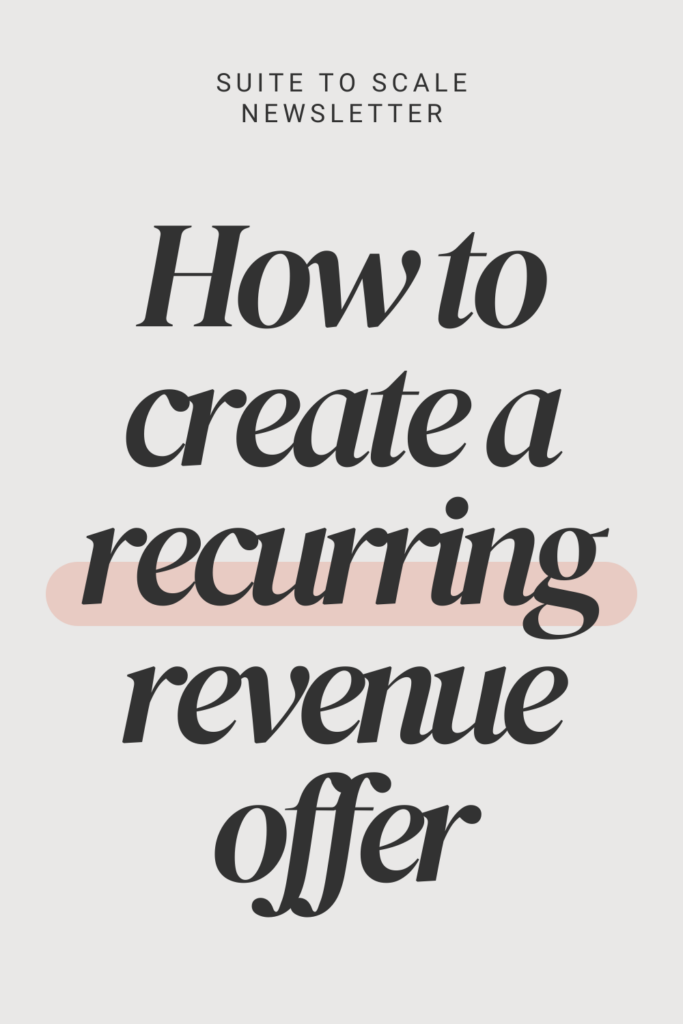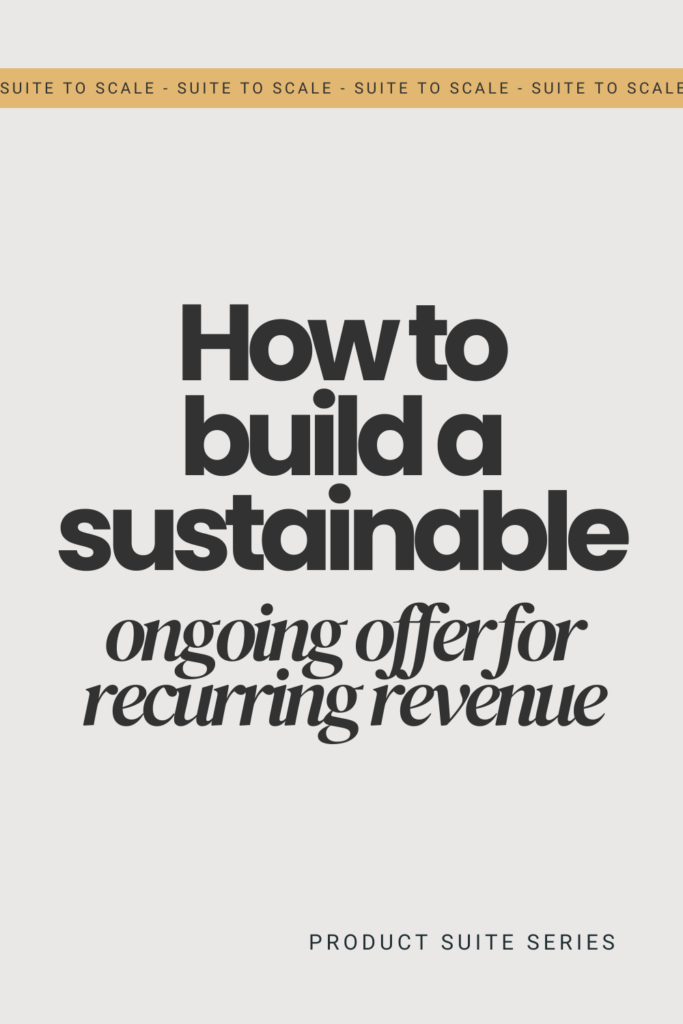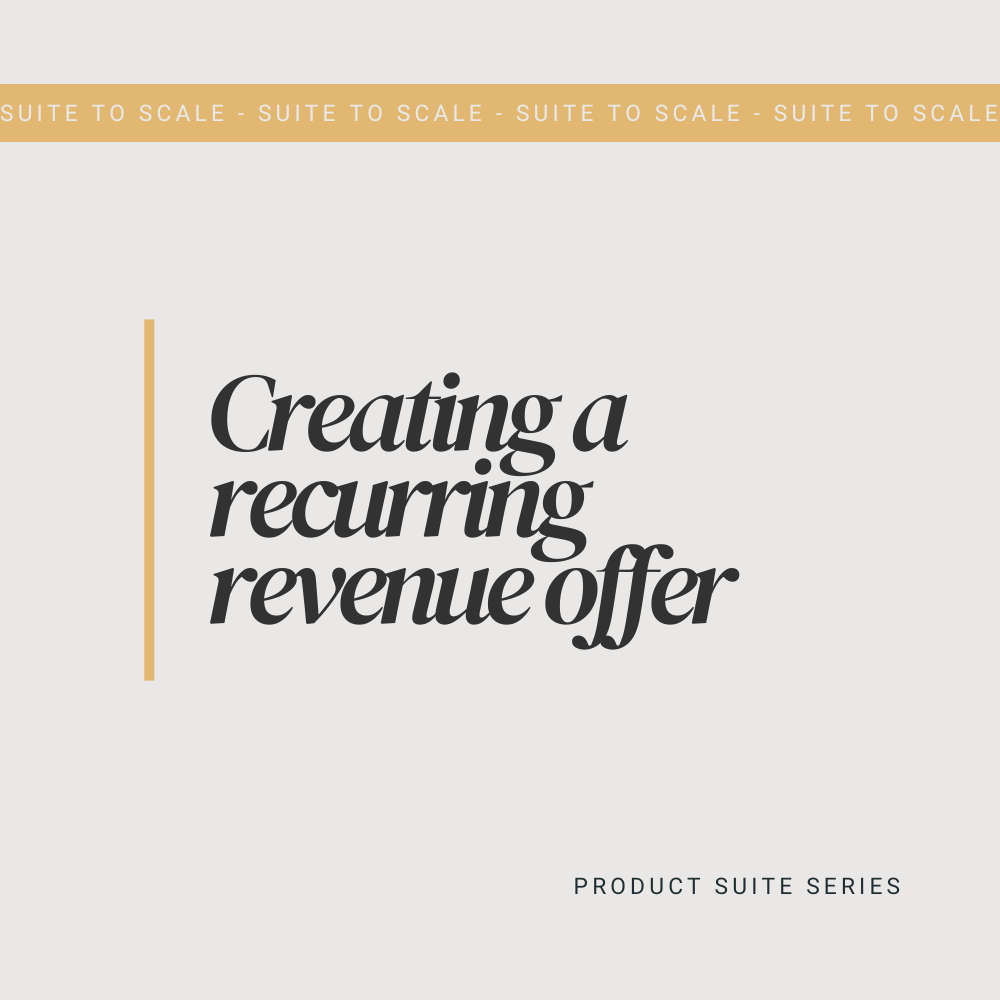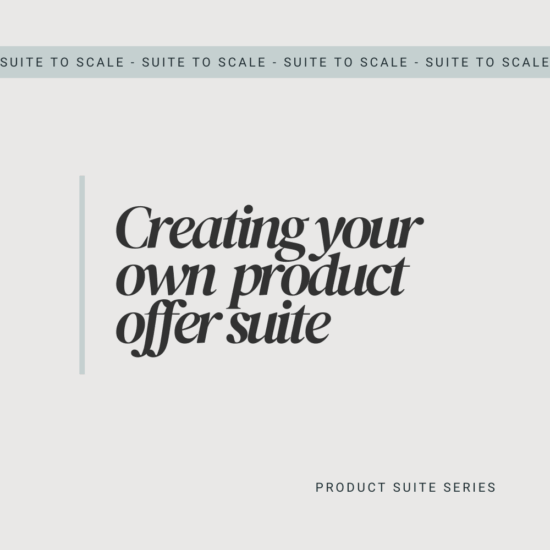One-off sales can be exciting.
But let’s be honest, relying on new sales every month to hit your revenue goals?
That can be exhausting.
If you’re looking to build stability and scale, it might be time to add an ongoing offer to your product suite that brings in recurring revenue.
Whether it’s a membership, a monthly resource drop, or a retainer model, ongoing offers help you serve your audience continuously and create predictable income for yourself.
Let’s talk about the kind of revenue that doesn’t ghost you after launch week.
Quick Summary: This post walks solopreneurs through the process of creating an ongoing offer — a recurring service, membership, or support model that generates predictable income while delivering consistent value. You’ll learn why it matters, what types of ongoing offers work well, and how to build one that fits your strengths and serves your audience.
What is an ongoing offer?
An ongoing offer is a product or service that clients or customers pay for on a recurring basis (monthly, quarterly, or even annually) in exchange for ongoing access to support, content, tools, or services.
It’s the offer that keeps the relationship going.
Examples include:
- A monthly membership community
- A content subscription (like templates or trainings)
- Weekly coaching calls or accountability pods
- Client retainers for continued 1:1 support
💡 Note: Since you’re likely fully booked with 1:1 work, anything with 1:1 support isn’t going to be the most scalable for you. Instead of adding more client hours to your plate, consider a subscription-style offer that delivers value to many (like templates, content packs, or group coaching) so you can grow without burning out.
It’s built for consistency. For your clients and your business.
Why ongoing offers matter.
If you’ve ever felt like your (non 1:1 service work) income resets to $0 at the start of every month… this is your answer.
✅ Predictable revenue
No more riding the launch rollercoaster. Ongoing offers smooth out your income.
✅ Stronger customer relationships
You’re not starting over every time. You’re deepening the transformation.
✅ Scalability without rebuilding
You can create a container of support or value that grows with minimal extra work.
✅ Less burnout, more balance
With systems in place, you’re not reinventing the wheel every week or month.
Types of ongoing offers that work well
You don’t need a huge membership platform or a team of moderators to get started.
Choose a model that fits you:
1. Membership Communities
They get ongoing access to exclusive content, coaching calls, or a private community.
✅ Great for: Coaches, strategists, educators
🛠 Tools to use: Circle, Skool, Facebook Groups, Mighty Networks
2. Content Subscriptions
They get monthly drops of templates, trainings, swipe files, or resources.
✅ Great for: Designers, template sellers, educators
🛠 Tools to use: Notion, Canva, Gumroad, ThriveCart Learn+
3. Accountability or Coaching Pods
They get group check-ins, progress tracking, and focused support.
✅ Great for: Mindset coaches, business mentors, service providers
🛠 Tools to use: Voxer, Zoom, Google Docs, Slack
4. Group coaching/ Masterminds
They get ongoing coaching or consulting as a group rather than 1:1 versions.
✅ Great for: Copywriters, designers, social media managers, service providers
🛠 Tools to use: Calendly, Slack, Trello, Zoom
Ongoing offer examples by business type
Let’s look at how this could play out depending on your business:
Example: Pinterest Manager
- Monthly strategy sessions or performance reviews
- Monthly pin design drops or idea bank
- Access to a content planning calendar for clients
Example: Coach
- Monthly mindset or business coaching group
- Weekly accountability check-ins or challenges
- Private Slack or Voxer access for support
Example: Template Seller / Digital Creator
- Monthly bundle of Canva or Notion templates
- Member-only masterclasses or walkthroughs
- Access to a vault of growing resources
Example: Service Provider (Copywriter, Designer, VA)
- Monthly content creation, audits, or consulting
- Weekly “on-call” hours or priority turnaround slots
- Monthly touchpoint + project planning
Suite to Scale Newsletter:
Get expert tips every week on product suite creation, sales funnels, and impactful program design—all tailored for service business owners like you.
How to build a sustainable ongoing offer
Creating a recurring offer doesn’t have to be complex. But it does need to be intentional, especially if you want it to last.
1: Choose a format that fits your strengths
Ask yourself:
- Do I enjoy showing up live and interacting in real time?
- Would I rather batch content and deliver value passively?
- Am I energized by group dynamics or more behind-the-scenes strategy?
Choose a delivery format that feels doable and energizing, not draining. You’ll be committing to this on a recurring basis, so it needs to align with how you naturally like to show up.
💡 Start simple. You can always grow it later.
2: Decide what support or content you can deliver consistently
Consistency is key here. You don’t need to deliver more, you need to deliver something predictable.
Think:
- One monthly training
- A bundle of marketing templates
- A group coaching call
- A strategy drop + reflection worksheet
Ask: Can I deliver this monthly without resenting it?
💡 Batch content where possible, and systemize the delivery. Your future self will thank you.
3: Price based on transformation + effort
Your pricing depends on two key factors:
- The transformation someone receives: is it results-driven? Supportive? Confidence-building?
- The effort required on your end: are you live every week or dropping a few links once a month?
- The value your offer brings to the customer: this includes your experience and knowledge.
Think about:
- Entry-level subscriptions ($9–$29+/mo) for templates or low-touch resources
- Mid-tier memberships ($49–$99+/mo) for live calls and group coaching
- Premium retainers ($150 – $249+/mo) for 1:1 or customized service support
This isn’t exact pricing to follow. Your entry level offer may be $4 per month or $55 per month. It depends on the factors above and the audience you’re targeting.
💡 Remember: recurring offers compound over time. Start lean and optimize with feedback.
4: Use systems to reduce time + effort
You’re not building a new job. You’re creating a system.
- Use Airtable, Notion, or Google Drive to organize your content drops
- Schedule calls using Calendly + automated reminders
- Pre-schedule emails using *BeeHiiv, *Kit, etc.
- Collect feedback monthly via Typeform or Google Forms
💡 The less time you spend managing logistics, the more time you spend serving and scaling.
Common ongoing offer mistakes (and what to do instead)
❌ Overpromising monthly deliverables
→ Start lean and expand only if it’s sustainable.
❌ Lack of clarity around the purpose or outcome
→ Give your ongoing offer a clear transformation or focus, not just “more content”.
❌ Not engaging your community or subscribers
→ Send regular prompts, hold office hours, or run Q&A sessions to keep them engaged. This doesn’t apply to every offer but does help reduce churn (members ending their subscription).
My Thoughts:
Recurring revenue isn’t just about making more money, it’s about building more freedom.
A great ongoing offer frees up your time and deepens your impact.
You’re no longer starting from scratch every month, you’re building momentum.
Your next step: Is an ongoing offer right for you?
Ask yourself:
- Do I have something I can consistently deliver or support long-term?
- Is there a segment of my audience that wants to stay connected?
- Would recurring income help stabilize my business?
If yes, then start small and build your recurring magic.
👉 [Read the Product Suite Guide] for a breakdown of all your scalable options.
👉 Not sure if courses, memberships, or templates are right for you? [Read the scalable offer post]
👉 Join the Suite to Scale newsletter for weekly tips on creating products, offers, and systems that scale sweetly.
*Affiliate Links: I may receive a commission if you purchase using one of my links (at no cost to you).







